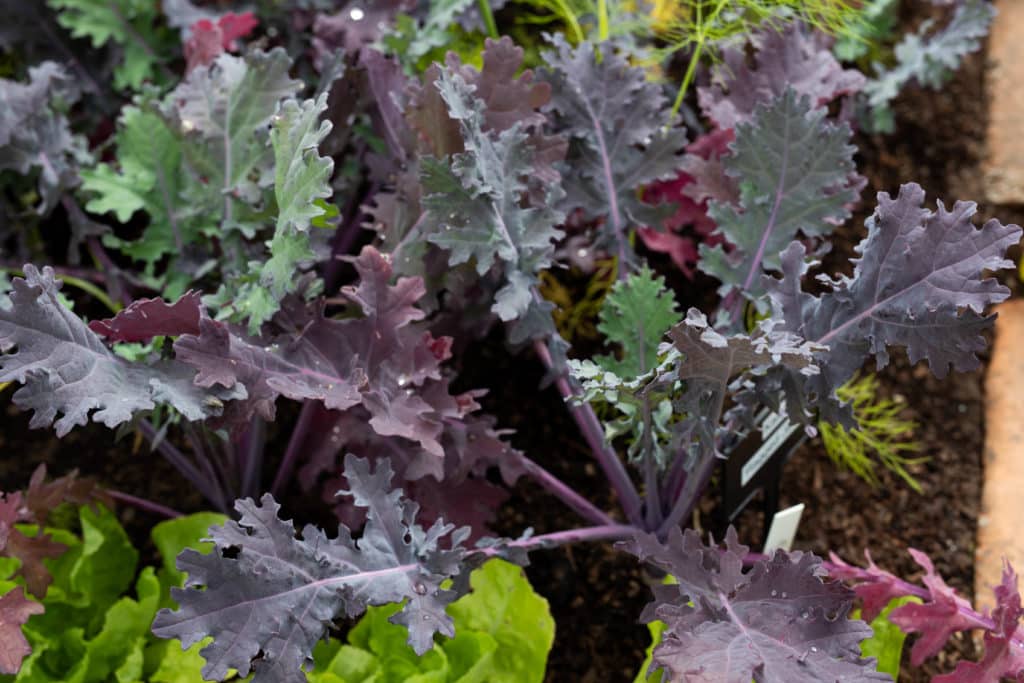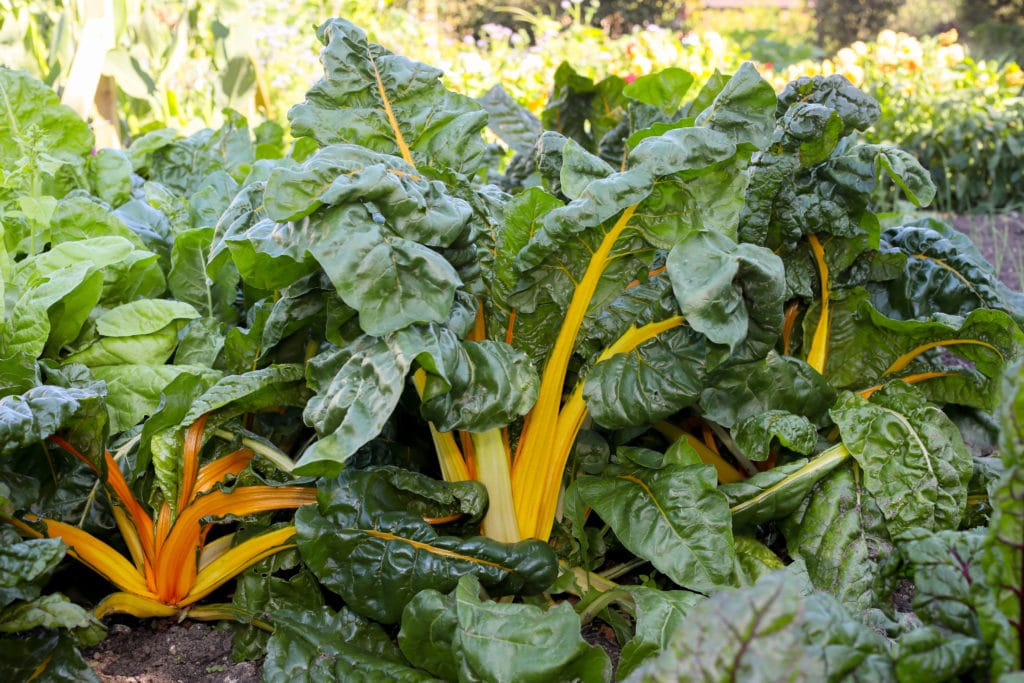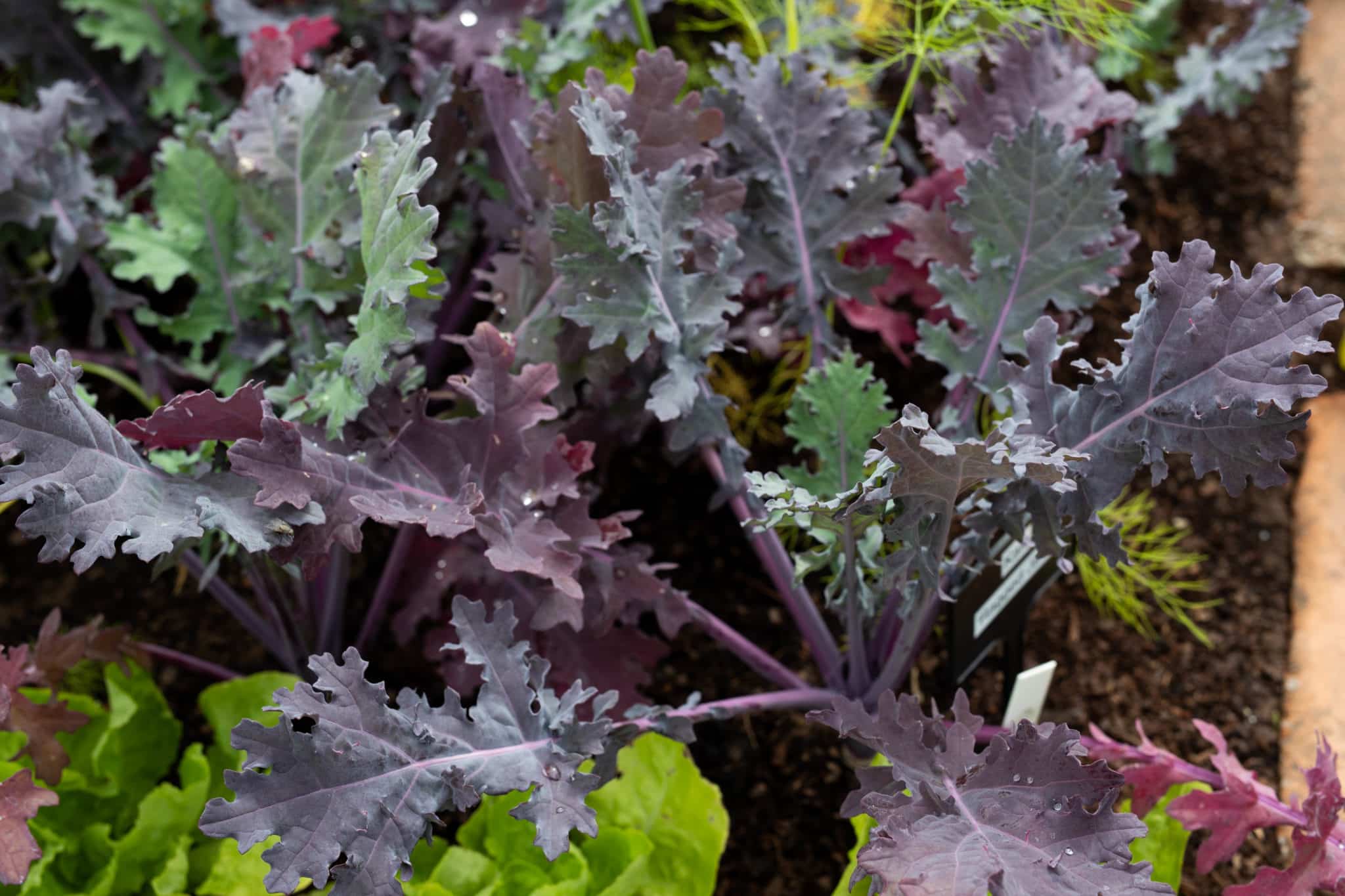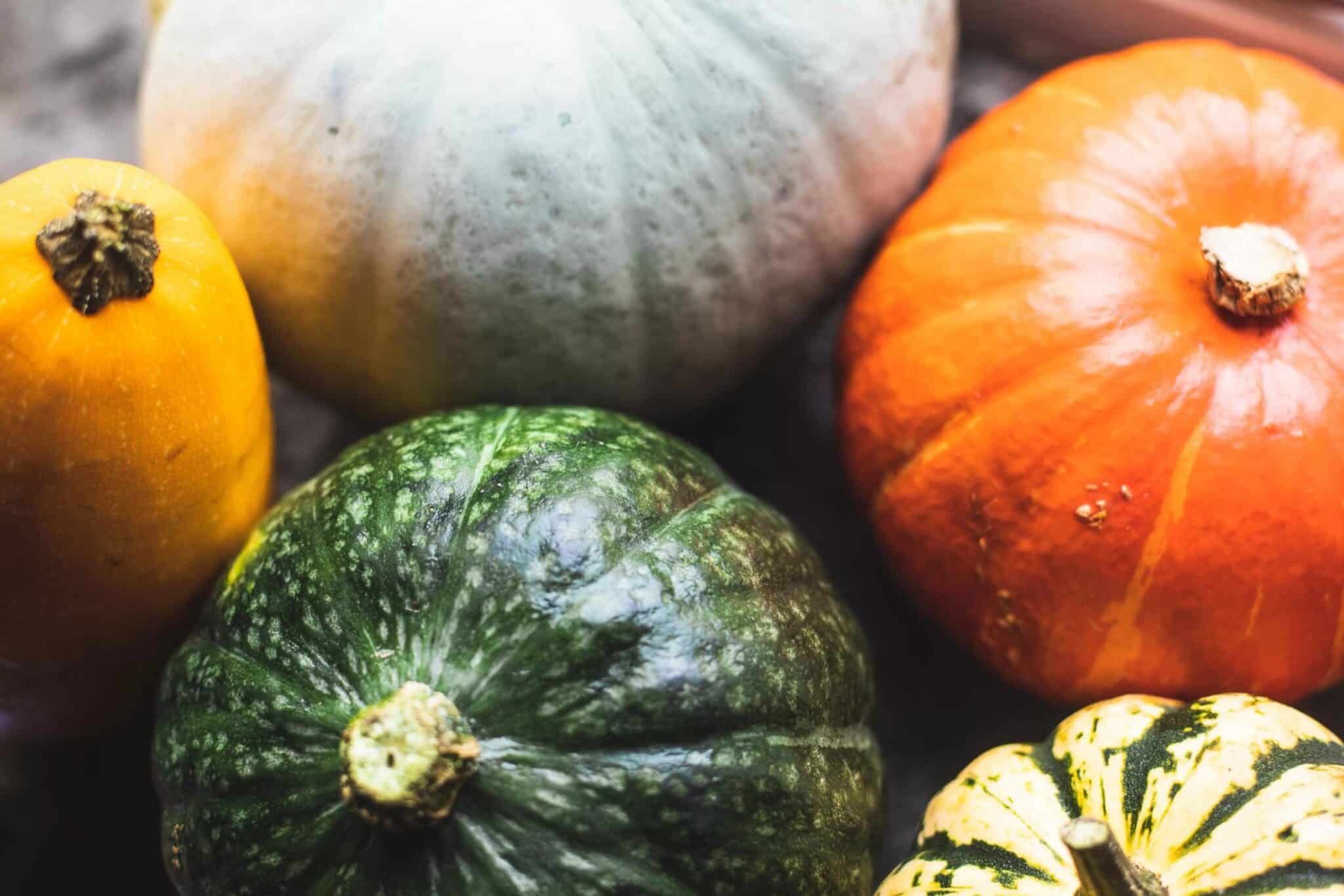Gone are the days when leafy veg just amounted to over-boiled cabbage leaves or limp lettuce. In recent years, whole groups of plants such as oriental leaves and peppery salads have arrived on the scene.
Additionally, some once-forgotten vegetables such as kale have been given a revival and a facelift. Many of these leaves grow particularly well over the winter, adding additional interest to the traditional winter staples.
If the array of leaves seems bewildering, then it can be helpful to divide them into groups, which can be treated in a similar way. The group of oriental leaves include Pak choi, Tatsoi, Choi Sum and many others.
Although they can be planted out any time from May onwards, they tend to fare better when planted out after July, as they bolt much less quickly. There are also fewer flea beetles around at this time which can pepper the leaves with holes.
See also:
The group that I would term ‘peppery salads’ includes rocket, mizuna, red winter mustard and ‘green in snow’ mustard. Again these are particularly well suited to growing over the winter and can provide leaves from October until March.
The group of kales provide an exciting range of textures and flavours. Perhaps we are most familiar with curly kale, but there are many other types including the dark flavour of Cavolo Nero or the bright colours and jagged shape of Red Russian.

Then there is the range of spinach beets including chard and perpetual spinach, which can be grown most of the year round. Choose from a range of red, yellow, pink, orange or white, or grow a mixture such as ‘Bright Lights’ or ‘Rainbow’. Some varieties remain productive much longer than others, so try a few different ones out and find one that suits you.
Four to try for yourself
Celery leaf
Although we traditionally think of celery as a stalk, in many places, it is grown as a leaf for flavouring soups, stocks and salads. Celery leaf can be sown any time from April onwards, and will grow very slowly at first, before picking up. It can be grown into the winter.
African kale
This vegetable is sometimes known as Covo and is commonly grown in Zimbabwe. Despite coming from Africa it withstands any UK winter. Rather than sowing from seed, the plants are propagated through small stem cuttings, around 3–4 inches in length. The plant will grow into a medium size bush, providing kale leaves all the year round for a duration of about three years.
Green in snow mustard
This peppery green leaf has a crunchy texture, which makes it good for salads or stir fries. It is highly frost-resistant making it good for growing over the winter from a late July sowing. Although it will start to bolt in March, prior to this, it forms small green florets that can be eaten like small spears of spicy broccoli.
Sorrel
Sorrel has a tangy tart taste. A few leaves added to a salad will give the impression that it has had a lemon dressing added. Once established, sorrel will grow as a perennial, and it is a good use of a shady spot not so well suited for vegetable growing. The leaves will die down over winter, and the flowering seed heads should be removed to keep it producing leaves.

Top tips for growing leafy salad and veg
- Pick leaves when they are young. Complaints about often levelled at chard for having leathery ‘earthy tasting’ leaves. This is only the case when the leaves have been on the plant for a long time. Harvest regularly to ensure that you are eating young fresh leaves. The smallest leaves can be used in salads.
- Protect your crops. Pigeons are the most likely to inflict widespread damage, especially for brassica leaves. Protect your crops with cloches and netting to be confident they won’t strip your plants. Structures can be built using 20 mm MDPE piping which is flexible and can be cut to length.
- Harvest sequentially. Harvest the outer leaves from a third of your plants. The next time you harvest, take leaves from remaining plants, allowing the first group of plants to recover for a week to 10 days before harvesting from them again.
Have you been experimenting in the garden? Share your success stories and tips of the trade with readers in the comments below.
The Grow Your Own Wicked Leeks series is written by Garden Organic, the national charity for organic growing. Each month we bring you timely advice on what to do in your organic patch, whether you’re an experienced grower or just starting out. Share your own tips and gardening photos on social media under #GYOWickedLeeks.















0 Comments